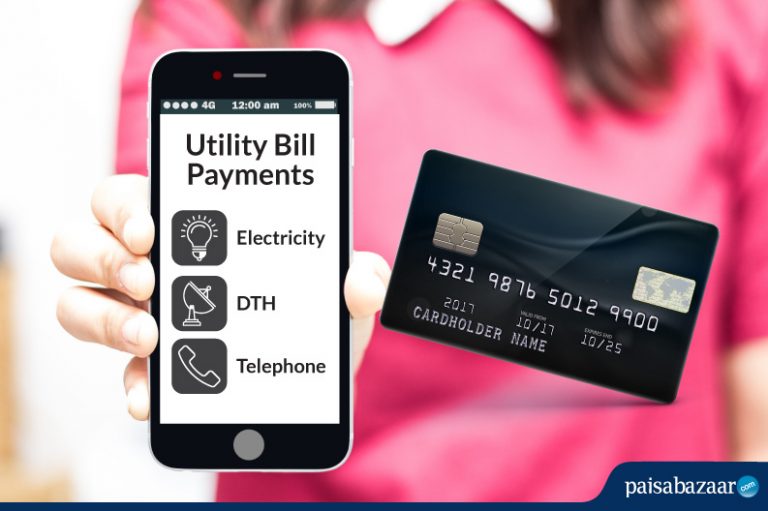
Utility bills make a significant portion of your monthly expenditure. These include indispensable payments like electricity bills, water bills, piped gas bills, telephone bills, etc. A lot of users pay these bills online via net banking or service provider websites but, nowadays, credit card issuers are also encouraging users to pay their utility bills through credit cards. But is it a feasible option? Let’s find out.
Advantages of Paying Utility Bills Via Credit Cards
Well, the strongest point here is convenience. It is very easy to add the card details with the registered billers and pay the due amount. As per Citrus Payment Solutions Pvt. Ltd.- a Mumbai-based payment processing firm, around 33% of credit cardholders use credit cards to pay their utility bills. Also, certain credit cards offer cashback and rewards for making utility payments via credit cards. So, if you have a credit card that offers any such rewards and benefits or utility bill payments, you must use your card to pay the dues.
Some of the credit cards that offer rewards on payment of utility bills are:
Standard Chartered Super Value Titanium Credit Card
This credit card offers 5% cashback on utility bills payments. The minimum transaction amount is just Rs. 750 and you can receive a maximum cashback amount of Rs 100 per month.
Citi Cashback Credit Card
With the Citi Cashback credit card, you get 5% off telephone and utility bill payments, subject to a maximum cap of Rs 100 per card per month.
Disadvantages of Using Credit Cards for Utility Bill Payments
Well if convenience is all you are looking for, then there are alternatives to paying utility bills through credit cards. You can use netbanking, electronic clearance service and your debit cards to make the payments. In all these cases, you can simply let the amount be deducted from your bank account without incurring any extra charges. For instance, SBI Card Prime offers an Easy Bill Payment facility to its customers. Cardholders can also avail of an Easy EMI facility to convert larger bills into affordable EMIs in various tenures of 3, 6,9 and 12 months. However, the rate of interest is applicable monthly reducing the balance on all converted EMI purchases.
Also, there are credit cards that do not offer the same rewards rate on utility bill payments. An example of these types of cards is the ICICI Coral Contactless credit card. This card’s usual reward rate for all spends is 2 PAYBACK Points on every Rs. 100 spent. However, you get 1 PAYBACK point on every Rs. 100 spent on utility bill payments and insurance categories. So, if you pay 2 bills corresponding to Rs. 2,000 and 2,500 each the rewards points earned would be 45 equivalent to Rs. 11.25. Now, that doesn’t seem to be a benefit. Also, when you will redeem the reward points, you will have to pay some redemption fee.
Bottom Line
Using a credit card to pay utility bills is a decision that a cardholder needs to weigh considering the pros and cons. If you have a card that offers benefits on utility bill payments you can undoubtedly go for it. However, if there are charges applicable, using other modes of payment can be the best option.